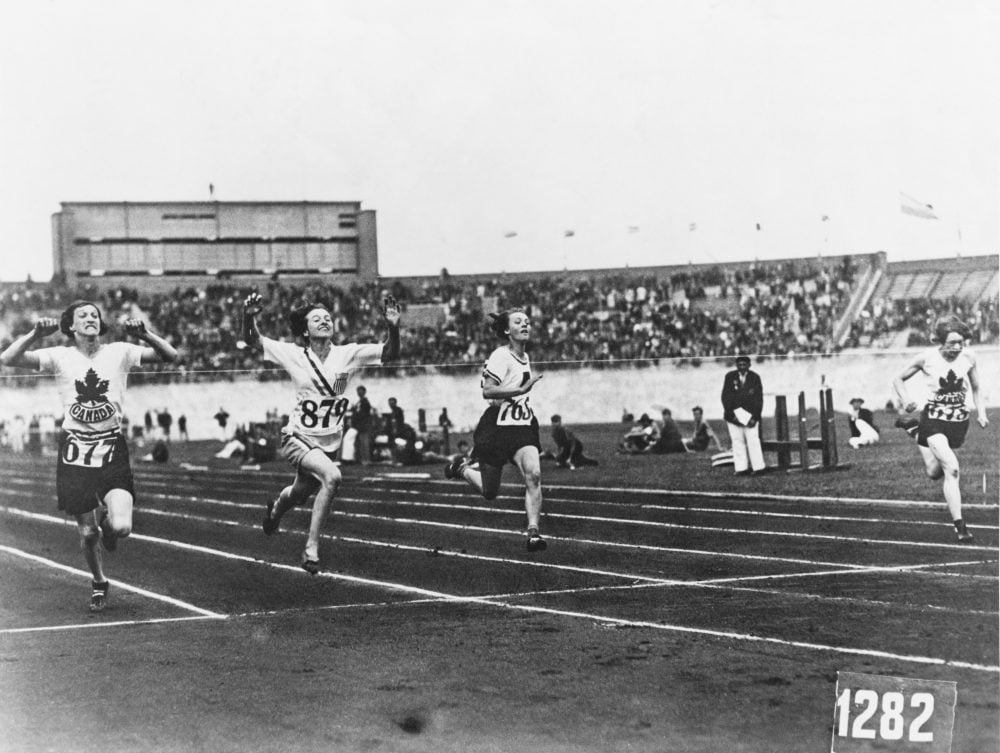Betty Robinson’s bizarre story is the epitome of the human spirit. Despite significant injuries, Robinson still proceeded to make her mark in the books of Olympic history.
The first woman 100m gold medalist was believed dead in a plane crash. She was in and out of consciousness after the undertaker declared her alive. She was advised she would never walk unassisted again, but she went on to win another gold medal.
Who was Betty Robinson?
Betty Robinson was born on August 23, 1911, in Riverdale, Illinois. She was a good-natured girl who liked playing the guitar and joined running races organized by her school and the local church. It was noted that she was a naturally fast runner and a very competitive individual. (Source: Runners World)
Robinson’s natural ability to run was discovered by her Science teacher Charles Price in 1928. Betty was trying to catch the train. Price was a former runner and coach of the boys’ track team of the Thornton Township High School. Price was waiting for the same train Robinson was trying to catch. He saw Robinson’s ability to run fast.
Price was shocked to see Robinson beside him on the train, confirming his suspicion that Robinson was a natural talent. Price convinced Robinson to let him time her run a 50-yard corridor, to which Robinson agreed. He then persuaded Robinson to train with the boys’ track team, as there wasn’t a girls’ team at that time. (Source: WBUR)
Robinson was soon making headlines on a national level. Robinson beat Helen Filkey, the 100m US record holder, on just her second race. She soon found her way into the 1928 Olympic tryouts and eventually was chosen to represent the country. At sixteen, Robinson was on her way to the Amsterdam Olympics. Robinson won the 100-M gold medal, despite almost being disqualified. She barely made it to the starting line as she inadvertently brought two left shoes. They had to ask someone to run back to the team’s locker to get her the correct pair.
Robinson continued running and led a full life until her death on May 17, 1999, at 87. (Source: Runners World)
Setting Records
Robinson’s competitive spirit was clearly shown in the milestones she gained in her life. Robinson was the first woman who won the 100-M gold medal in the Olympics. She was and remained to be the youngest athlete to win Olympic gold. Robinson’s official time for the 1928 Amsterdam Olympics 100-M was 12.2 seconds. (Source: WBUR)
Robinson set two new records in 1929. She set the record of the 50-yard dash at 5.8 seconds and the 100-yard dash at 11.4 seconds. In 1931, Robinson set the 6.9 seconds record for the 60-yard dash and 7.9 seconds for the 70-yard dash. She then joined the 1936 Olympics and won gold for the 4x100m relay team.
In 1977 Robinson was inducted into the USA National Track & Field Hall of Fame and was chosen as the torchbearer for the 1996 Atlanta Olympics at 84. Despite her old age, Robinson refused any help when she carried the heavy torch as she made her way a few blocks in Denver. (Source: Runners World)
Tragedy and Recovery
On June 28, 1931, Robinson joined her cousin, a pilot, to go flying. Robinson wanted to cool down on a hot summer day but was forbidden by her coaches to go swimming. Robinson and her cousin soon took off on a small plane, but the engine seemed to stall at around 600 feet.
The plane ultimately crashed on a marshy field. Her cousin was found alive, but both legs were crushed. Robinson, on the other hand, was presumed dead due to her head wound. (Source: Runners World)
Robinson had a badly broken leg, hip, and arm to add to her head wound. Robinson was not taken to a hospital but directly to an undertaker. Fortunately, the undertaker was an observant fellow and noticed that Robinson was still breathing. He called the doctors for further examination and found that Robinson was indeed still alive. (Source: WBUR)
The doctors told her she might not be able to walk again. Robinson fell into depression and didn’t want to leave her bed, but her brother-in-law helped her through this stage. Robinson’s competitive spirit rose and pushed her to train harder than anyone else.
She eventually was able to join the 1936 Olympics but only in the relay race as her injuries did not allow her to crouch – which was then the standard starting position for the 100-M race. Despite this, she was still able to win gold. (Source: Runners World)
